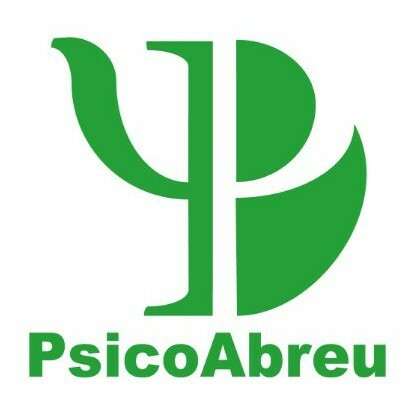Symptoms of agoraphobia (physiological, cognitive and behavioral)
Can you imagine being afraid to go out alone? Experiencing constant worry and fear about the possibility of having an anxiety attack? Being unable to catch a bus to work or go to the mall to buy a gift for your child?
Well, this is how a person who suffers agoraphobia.
What is agoraphobia?
Agoraphobia, according to the Diagnostic and Statistical Manual of Mental Disorders (DSM-V), is the appearance of anxiety in places or situations in which it is very difficult to escape, or where you cannot get help in the event of an anxiety attack.
The situations before which this fear or intense anxiety appears can be:
- Public transport.
- Open spaces.
- Closed places.
- Stand in line or be in the middle of a crowd.
- Being away from home alone.
The Malaga psychologist Ana Claudia Alda, from the cabinet Psychologists Málaga PsicoAbreu, points out that the fear that appears in agoraphobia is not a specific fear of situations, but rather a fear of fear. That is, it is the fear of experiencing the symptoms of anxiety and its possible consequences.
Therefore, the fear and anxiety that appears is disproportionate and excessive compared to the real danger posed by such situations.
Types
Agoraphobia can appear in the following ways:
- Panic disorder with agoraphobia. The person has suffered panic attacks on several occasions and, in addition, experiences concern about the occurrence of another new crisis and its possible consequences.
- Agoraphobia without a history of panic disorder. A panic attack has never appeared, but agoraphobia appears because of the fear of developing symptoms that resemble a panic attack.
What are the characteristic symptoms?
The most common symptoms in agoraphobia are the following.
On a physiological level. changes appear such as:
- Hyperventilation
- Feeling of suffocation
- Palpitations
- Chest pain.
- Dizziness
- Sweating
At a cognitive level, anticipations related to the possible appearance of an anxiety crisis appear, as well as concerns about its possible consequences physical (heart attack, not being able to breathe, etc.), mental (loss of control, going crazy, etc.) and social (that others think that the person she's crazy).
At the behavioral level, the person tends to avoid feared situations or face them, but with high emotional distress. It is common to find safety behaviors that help to withstand discomfort, such as, for example, being accompanied, taking medication or always carrying water with you.
Vulnerability and maintenance factors
There are different variables that are related to the development and maintenance of agoraphobia that facilitate the understanding of this phenomenon.
Vulnerability factors
- Genetics and temperament. The neuroticism or the predisposition to experience unpleasant emotions in the face of stressful stimuli appears as the trait most associated with the development of anxiety problems.
- Sensitivity to anxiety. It refers to the belief that anxiety and its symptoms can have negative consequences on a physical, psychological and social level. This characteristic determines the appearance of the fear of fear referred to above.
- Interoceptive awareness. People with agoraphobia have a high awareness of their own physical sensations, as well as a good ability to detect them.
- Start of panic attacks. When agoraphobia presents with a panic attack, agoraphobia usually appears as a consequence of the fear experienced during the crisis. The concern about not knowing if it will appear again or if it will be able to cope, leads the person to the development of agoraphobia.
Maintenance factors
Interoceptive conditioning. Due to previous experience, the person experiences any physiological change such as the onset of a panic attack. In this way, physical sensations that may resemble anxiety (sexual arousal, exercise physical, etc.) awakens an emotional response of autonomic activation that facilitates the appearance of another attack.
Catastrophic interpretation of bodily sensations. The person interprets any somatic sensation as a symptom of the occurrence of a crisis. Thus, the belief that anxiety will have negative consequences (sensitivity to anxiety) favors this catastrophic interpretation.
Do you have treatment? What is the most appropriate intervention?

Cognitive-behavioral psychological treatment has been highly effective, becoming the main line of intervention.
There are two intervention programs within the cognitive-behavioral current that have obtained great results. Both use very similar cognitive and behavioral techniques, but differ in their conceptualization of the problem.
1. Clark's Panic Disorder Cognitive Therapy Program
This program is based mainly on the idea that the main factor maintaining the problem is the catastrophic interpretation of bodily sensations. All the techniques used in this program are aimed at restructuring the catastrophic beliefs that exist about physical sensations.
2. Barlow's Panic Control Treatment Program
In this case, habituation to interoceptive sensations is prioritized to eliminate interoceptive conditioning existing through exhibitions. Like the previous one, it also works on the restructuring of catastrophic beliefs based on the exhibitions made.
Bibliographic references:
- American Psychiatric Association (2013). Diagnostic and statistical manual of mental disorders (5th ed.). Washington D. C.: American Psychiatric Association.
- Barlow, D. H. and Cerny, J. TO. (1988). Psychological Treatment of Panic. New York: Guilford Press.
- Barlow, D. H. and Craske, M. G. (1989). Mastery of your anxiety and panic. Albany, New York: Graywind Publications.
- Barlow, D. H. and Craske, M. G. (2007). Mastery of your anxiety and panic (Workbook) 4th edition. USA: Oxford University Press.
- Clark, D. M. (1989). Anxiety states: panic and generalized anxiety. In K. Hawton, P. M. Salkovskis, J. Kirk and D. M. Clark (Eds), Cognitive therapy for psychiatric problems: a practical guide. Oxford: Oxford University Press.
- Salkovskis, P. M. and Clark, D. M. (1991). Cognitive therapy for panic disorder. Journal os Cognitive Psychotherapy, 5, 215-226.
- Vallejo, M. TO. (2016). Behavior therapy manual. Madrid: Dykinson.
